Business growth starts with having a well-defined vision that outlines where the company wants to go and how it plans to get there. A strong vision provides direction for decision-making, goal-setting, and resource allocation. Without clarity, businesses can easily become reactive instead of proactive. When leadership communicates a compelling vision, it aligns the entire organization around shared objectives and energizes teams to work toward common goals. Enterprise Growth becomes more achievable when everyone understands what success looks like and the path to reaching it. This foundation ensures that expansion is strategic and sustainable rather than chaotic or directionless.
Market Research Fuels Business Growth
Understanding customer needs and market conditions is critical to driving business growth. Conducting thorough market research helps businesses identify target demographics, customer pain points, industry trends, and competitor strategies. This knowledge allows companies to tailor their offerings, refine marketing strategies, and anticipate changes in demand. Business growth thrives on data-driven decisions, and market research provides the insights necessary to stay ahead. By continuously analyzing the market, businesses can innovate, adapt, and avoid stagnation, ensuring they remain relevant and competitive in a dynamic environment.
Product Innovation Drives Business Growth
Business growth often stems from introducing new products or improving existing ones to meet evolving customer needs. Innovation keeps a company ahead of the curve, attracting new customers and retaining existing ones. Whether it’s through technological advancements, design improvements, or added features, innovative products create excitement and demand. Companies that invest in research and development position themselves as industry leaders and build brand loyalty. Enterprise Growth accelerates when organizations prioritize creative thinking and respond swiftly to market feedback, turning fresh ideas into valuable offerings that stand out in crowded marketplaces.
Customer Experience Enhances Enterprise Growth
Exceptional customer experience is a powerful driver of business growth, as satisfied customers are more likely to return and refer others. Investing in customer service, personalized interactions, and user-friendly systems builds trust and loyalty. Today’s consumers expect businesses to understand their preferences, respond promptly, and deliver consistent quality. Businesses that listen to their customers and continuously improve the experience stand out from competitors. Business growth becomes more attainable when customers become advocates, sharing their positive experiences and expanding a company’s reach through word-of-mouth and social proof.
Digital Marketing Expands Business Growth Potential
The digital landscape offers businesses powerful tools to reach wider audiences and accelerate business growth. Through strategies like search engine optimization (SEO), content marketing, email campaigns, social media, and paid advertising, companies can engage prospects across multiple channels. Digital marketing enables real-time tracking of campaign performance, allowing businesses to optimize their efforts and maximize return on investment. It also supports targeted messaging, helping brands connect with specific audiences based on behavior, interests, and demographics. Enterprise Growth becomes more scalable when digital marketing is used effectively to attract, convert, and retain customers.
Scalable Systems Support Business Growth

To manage increased demand and complexity, businesses need systems and processes that can scale. From customer relationship management (CRM) software to inventory control and automated workflows, scalable infrastructure reduces operational bottlenecks. These systems enable companies to deliver consistent quality even as they grow, ensuring a positive customer experience and efficient internal operations. Without scalable systems, growth can lead to chaos, customer dissatisfaction, and missed opportunities. Business growth thrives in environments where technology, processes, and people work in harmony to support higher volumes, expanded offerings, and geographic expansion.
Financial Planning Sustains Business Growth
Proper financial planning is essential for sustaining enterprise growth, as it ensures that the company has the resources needed to invest in expansion. This includes managing cash flow, budgeting for new initiatives, and securing funding when necessary. Companies must monitor financial performance closely to identify profitable areas and control unnecessary spending. Business growth can stall if financial mismanagement leads to overextension or underinvestment. A strong financial foundation allows businesses to take calculated risks, weather economic fluctuations, and fund long-term initiatives that contribute to growth and stability.
Talent Acquisition Fuels Business Growth
Hiring the right people is fundamental to achieving business growth, as a skilled and motivated workforce drives productivity, innovation, and customer satisfaction. Companies that invest in recruiting, training, and retaining top talent are better positioned to execute their strategies effectively. The culture of a growing business should encourage collaboration, accountability, and continuous learning. Empowered employees contribute new ideas, solve problems proactively, and embody the brand’s values. Enterprise growth flourishes when organizations view their people as their greatest asset and create an environment where talent can thrive and evolve alongside the company.
Strategic Partnerships Accelerate Business Growth
Forming strategic partnerships is a smart way to accelerate business growth by leveraging the strengths of other organizations. These alliances can open new markets, enhance product offerings, or provide access to complementary expertise. Whether through co-marketing, joint ventures, or supplier agreements, partnerships create win-win opportunities that multiply impact. Businesses can scale more efficiently by sharing resources and tapping into existing networks. Strategic partnerships should align with the company’s values and goals to ensure long-term success. When executed thoughtfully, collaboration becomes a catalyst for innovation and growth.
Performance Metrics Guide Business Growth
To manage and measure business growth, companies must establish key performance indicators (KPIs) that reflect their objectives. These metrics could include revenue growth, customer acquisition, retention rates, conversion rates, or operational efficiency. Regularly tracking performance enables businesses to identify what’s working and where improvements are needed. Data-driven decision-making ensures that growth initiatives are based on facts, not assumptions. Business growth becomes more intentional and effective when it is guided by measurable goals, frequent analysis, and a willingness to adapt based on results. Clarity in metrics translates into clarity in direction.
Adaptability is Essential for Long-Term Business Growth
In an ever-changing business environment, adaptability is key to sustaining long-term enterprise growth. Market conditions, technology, consumer preferences, and competition are constantly evolving, and companies must be agile to survive and thrive. Embracing change rather than resisting it allows businesses to pivot when needed, seize new opportunities, and mitigate risks. Companies that cultivate a culture of resilience and openness to change are better equipped to navigate disruptions. Business growth is not a linear path but a dynamic journey that rewards those willing to innovate, experiment, and evolve with their industry.
Conclusion
Business growth is the result of strategic planning, execution, and the ability to adapt in a changing landscape. From building a clear vision and fostering innovation to optimizing operations and investing in people, each element plays a vital role in achieving sustainable success. Growth does not happen by chance—it is cultivated through deliberate actions and ongoing evaluation. Businesses that focus on delivering value, embracing technology, and responding to customer needs are well-positioned to thrive in the long run. With the right mindset and tools, enterprise growth becomes more than a goal—it becomes a continuous cycle of improvement and expansion that fuels long-term prosperity.
